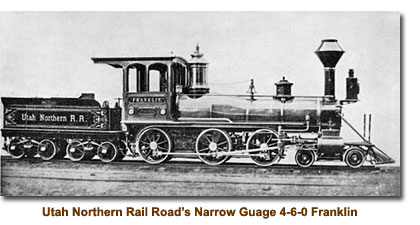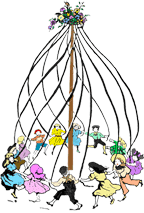History of Mendon — 1857
The settlement of Mendon was commenced in 1857, by Alexander and Robert Hill. During the year 1859 the following families arrived: Roger Luckham, Charles Atkinson, Charles and William Bird, Nicolai Sorensen, John and Hyrum Richards, Ralph Forester, Robert Sweeten, Hans Jensen, William Findley, James H. Hill, Isaac, Abraham and Peter Sorensen, James G. Willie, Charles Shumway, H. P. Larsen, Kelsey and Bradford Bird, Andrew Andersen and Jasper Lemmon.
August 10, 1859, Jesse W. Fox, Sr., surveyor from Salt Lake City, surveyed and laid out this Old Fort, also the fields adjoining the town. At this time, the pioneers were living in their tents and wagons. They now built their log houses and dugouts. The buildings all faced each other, a row on each side of the street, about two blocks long, their corrals being at the back.
Charles Shumway and his son, Andrew P., took up farms at Mendon in the spring of 1859. Charles Shumway was then authorized to take charge of the public affairs of the new settlement until his son, Andrew P., was ordained bishop on December 19, 1859. The first meetings were held in private cabins during the winter. Robert Luckham led the singing and Ira Ames played the fiddle.
In the spring of 1860, the following families arrived: Edward Wood, Manning Roe, Adam Smyth, Amenzo W., George W., and Albert Baker, and John Donaldson. In the winter of 1859 and 1860 the men of the Fort went to the canyons in Cache Valley, both east and west, to get fine logs with which to build a public house. The structure was 18 by 24 feet and served for worship, school and recreation.
On one occasion, when Brigham Young, Heber C. Kimball, and other church authorities were making a tour of Cache Valley, Heber C. Kimball suggested that the Fort be named Mendon in remembrance of Mendon City in New Your State, where he and Brigham Young formerly resided.
In the spring of 1861, a United States post office was established in Mendon, James G. Willie being appointed first Postmaster. The mail was brought in on horseback once a week from Ogden.
In the winter on 1860–1861, the first school was opened, Amenzo W. Baker being the first teacher, followed by Jasper Lemmon, Adam C. Smyth, and John Donaldson.
In the spring of 1861, the men turned out in mass to construct the big dam across Gardner’s Creek to irrigate the farms.
John Hill Richards was buried September 30, 1861, being the first person to be interred in the Mendon city cemetery. Amenzo W. Baker was first Sexton.
Mary Ann Sorensen Hill, daughter of Abraham and Marie Jensen Sorensen, was born February 19, 1860, and has the distinction of being the first child born in Mendon, Mathew M. Forester, son of Ralph and Margaret McKeen Forester, born March 29, 1860, was the second child born here.
James H. Hill and Christena Sorensen were the first people married here. James G. Willie performed the ceremony January 7, 1860.
Henry Hughes and others came to Mendon in 1860.
Adam C. Smyth organized the first choir and was chorister.
In the spring of 1862–1863–1864, Jasper Lemmon, Amenzo W. Baker, Ralph Forester, Isaac Sorensen, and Joseph H. Richards drove ox teams from Mendon to Omaha, Nebraska, and to the Missouri River and returned, bringing the poor immigrants saints.
In 1862–1863 Nicholas Sorensen, Roger Luckham, Robert Sweeten, and John K. Richards raised flax and made jute from the bark, which was converted into wrap from which they made spun cloth and grain sacks. John K. Richards raised hemp for poultry food, etc., and ropes and cards were made from the bark.
The first Sunday School was held in Mendon in 1863, with James G. Willie as superintendent from 1863 to 1866; followed by Ralph Forester, 1866 to 1875; John Donaldson, 1875 to 1884; Isaac Sorensen, 1884 to 1899. He was also choir leader and Sunday school chorister for many years.
Joseph Baker built the first rock dwelling house in 1866. In 1864 a stone chapel was built measuring 28 by 45 feet. At its completion, it was considered the finest church of the valley.
George Thurston and Kelsey Bird built the Mendon gristmill in 1864 on Gardner’s Creek.
In the spring of 1864, a town plot was surveyed by James H. Martineau. The families moved from the Old Fort to their city lots of one and one–fourth acres each. The City was incorporated on May 12, 1870. A mayor, city council, and justice of the peace were elected. From 1870 to 1872, George W. Baker was the first mayor, followed by Charles Bird in 1872–1876. Henry Hughes followed in 1876–1882; John Donaldson in 1883; Robert Sweeten, Andrew Sorensen, Jens Jensen, Robert Forester (no dates available), Joseph H. Richards was the first Marshall.
In 1866 the people built a stonewall around the church house for protection from the Indians. This wall was six feet high and enclosed about one acre of land. Bastions were built at the northeast and southwest corner, with portholes to guard each side of the outer walls.
In 1866 or 1868, the Women’s Relief Society was organized, with Elizabeth Willie as president, followed by Maria Baker, Mary I. Sorensen, Mary Jensen, and Mary A. Bird.
In the summer of 1867 the gardens and farms were destroyed by crickets and grasshoppers.
On April 1 1869, a co-operative mercantile store was organized, with James G. Willie as general manager and chief clerk. Their motto was “Small profits and quick returns.” Alfred Gardner was assistant manager.
In 1869, Andrew P. Shumway (bishop) was called as Missionary to Great Britain, were he labored until 1871. Henry Hughes was appointed acting bishop in his absence.
On October 7, 1872, Henry Hughes was ordained bishop and acted as such until 1873, when he went to Wales on a mission. Ralph Forester served as acting bishop until his return in 1875.
 In 1872, the first railroad steam engine ran into Mendon on the Utah Northern Railway. December 22, 1872, the first train, consisting of a passenger car, one boxcar, and two flat cars, drawn by a steam engine arrived in Mendon, and the children were invited to take a ride. Mendon was now connected by rail with Ogden and Salt Lake City.
In 1872, the first railroad steam engine ran into Mendon on the Utah Northern Railway. December 22, 1872, the first train, consisting of a passenger car, one boxcar, and two flat cars, drawn by a steam engine arrived in Mendon, and the children were invited to take a ride. Mendon was now connected by rail with Ogden and Salt Lake City.
On December 30, 1875, the Young Men’s Mutual Improvement Association was organized, with John Donaldson as president. October 25, 1877, the Young Women’s Mutual Improvement Association was organized, with Larsine Sorensen Richards as president. June 3, 1879 the Primary Association was organized, with Martha Paul as president.
At some time between the years 1882 and 1885, Frank Williams organized the Martial Band, consisting of young boys, he also introduced the maypole dance, which is still celebrated here every spring.
The later improvements are the culinary water system, which was installed on March 6 1912, and is among the best in the state of Utah. In 1915, the electric railway trains ran into Mendon. The electric lighting system was installed in Mendon by the Utah Power and Light Company in 1916.
An up-to-date school building was erected in 1935, with four teachers, Durrell Hughes as principal.
Mendon has produced doctors, lawyers, professors, professors of music, 41 first-class schoolteachers, 23 trained nurses, and about 40 World War I veterans. A brick Church House was built in 1915.1
![]()
1. Cache County School District Children and Teachers, et al., History of Cache County, 1938 & 1946, p. 39–42.
